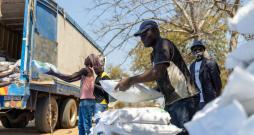Peacemaking through native plants
MCC lives out its commitment to 'right relationship with creation' on Akron campus
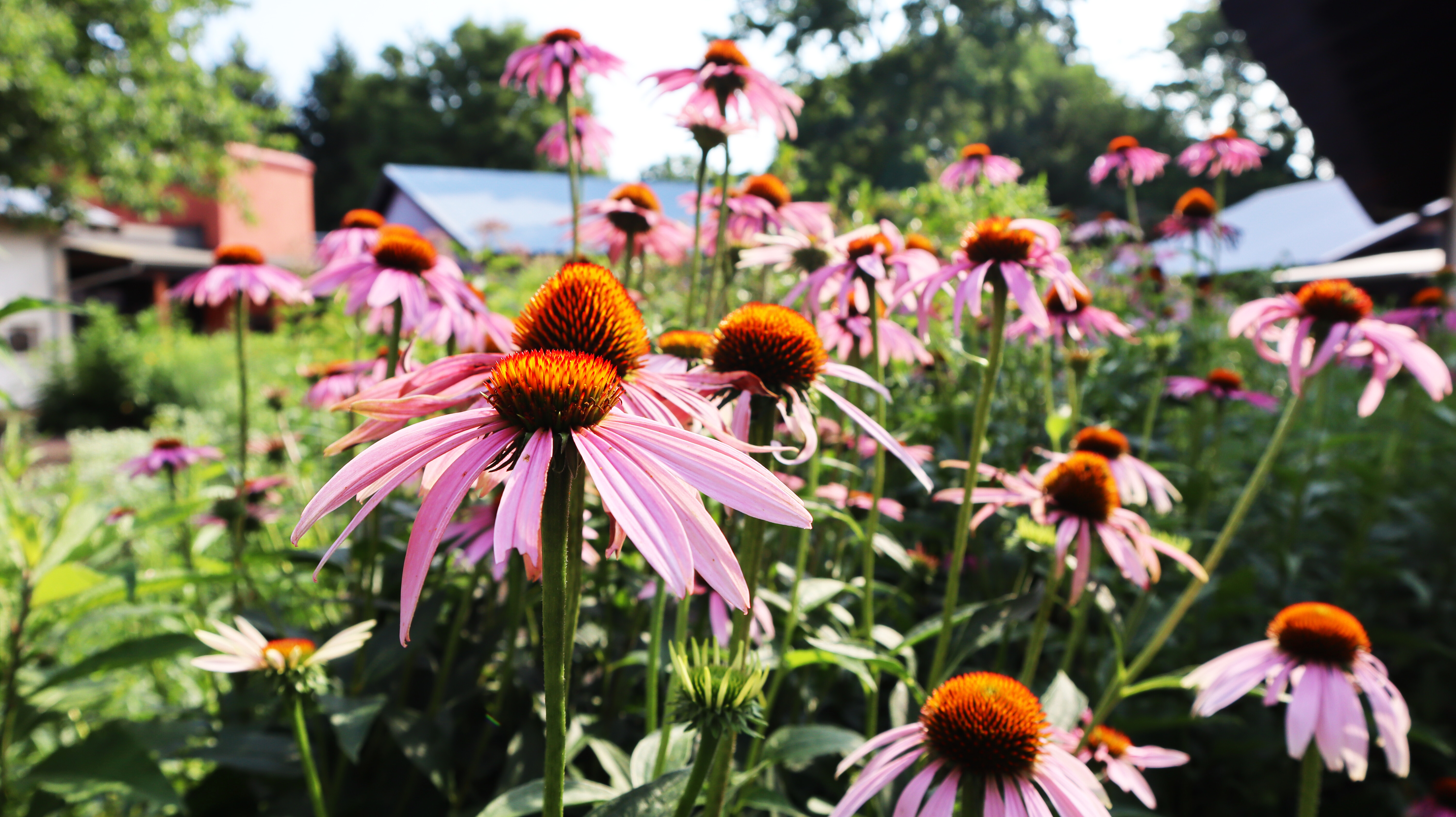
I am standing waist high in a bed of wildflowers, watching a yellow tiger swallowtail sip from a purple monarda flower. I can smell the crushed monarda leaf in the air as the dew evaporates in the sun. There is a leaf in my hair and dirt on my hands from adding a new wintersown seedling clump into a bare patch. I am lost in wonder at the relationships and interactions around me.
A visitor to the Mennonite Central Committee (MCC) Welcoming Place walks past where I am working, and immediately I become conscious of myself. For just a second, I lose connection with the life teeming around me. Then, just as quickly, I embrace my true task: to invite people to experience the joy of “right relationship with creation.” (Principles and practices.)
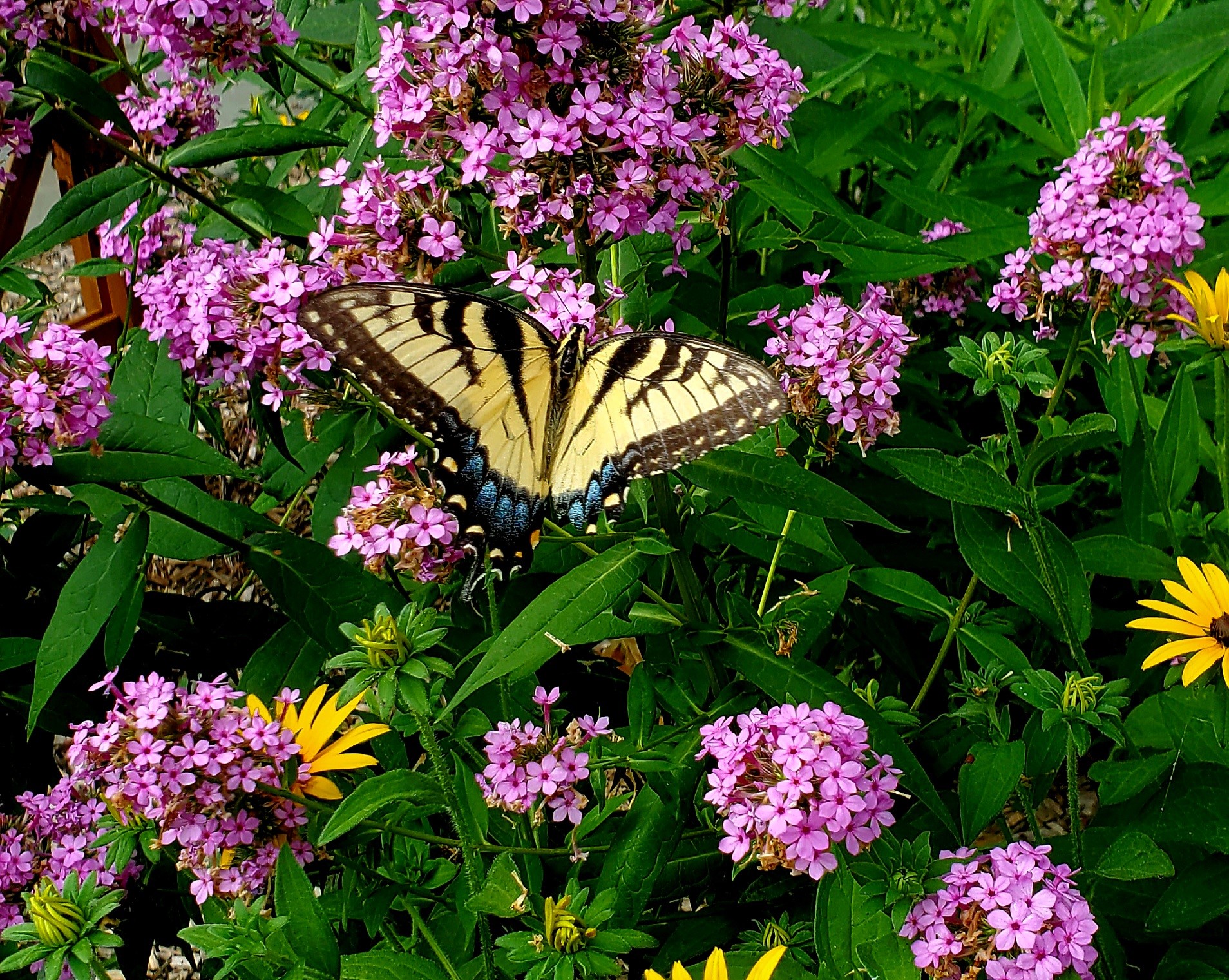
The visitor’s eyes follow mine, watching the creatures around me gathering food and pollinating flowers. A fat, fuzzy bumble bee forces its way inside a blossom and once our eyes have adjusted, we can see tiny flies also hard at work. The palm-size yellow butterfly, which likely hatched in our woodland, flits away and the visitor’s eyes meet mine, smiling in delight.
Though this vignette is a combination of experiences I have enjoyed in my work as the sustainable landscape coordinator for MCC, sharing moments like these happens with many people from all over the world. Often, visitors break the silence:
“The plantings in the Welcoming Place remind me of my home country.”
“The Welcoming Place smells like my city in Colombia.”
“The native plants make me feel at home.”
“This space reminds me of my childhood.”
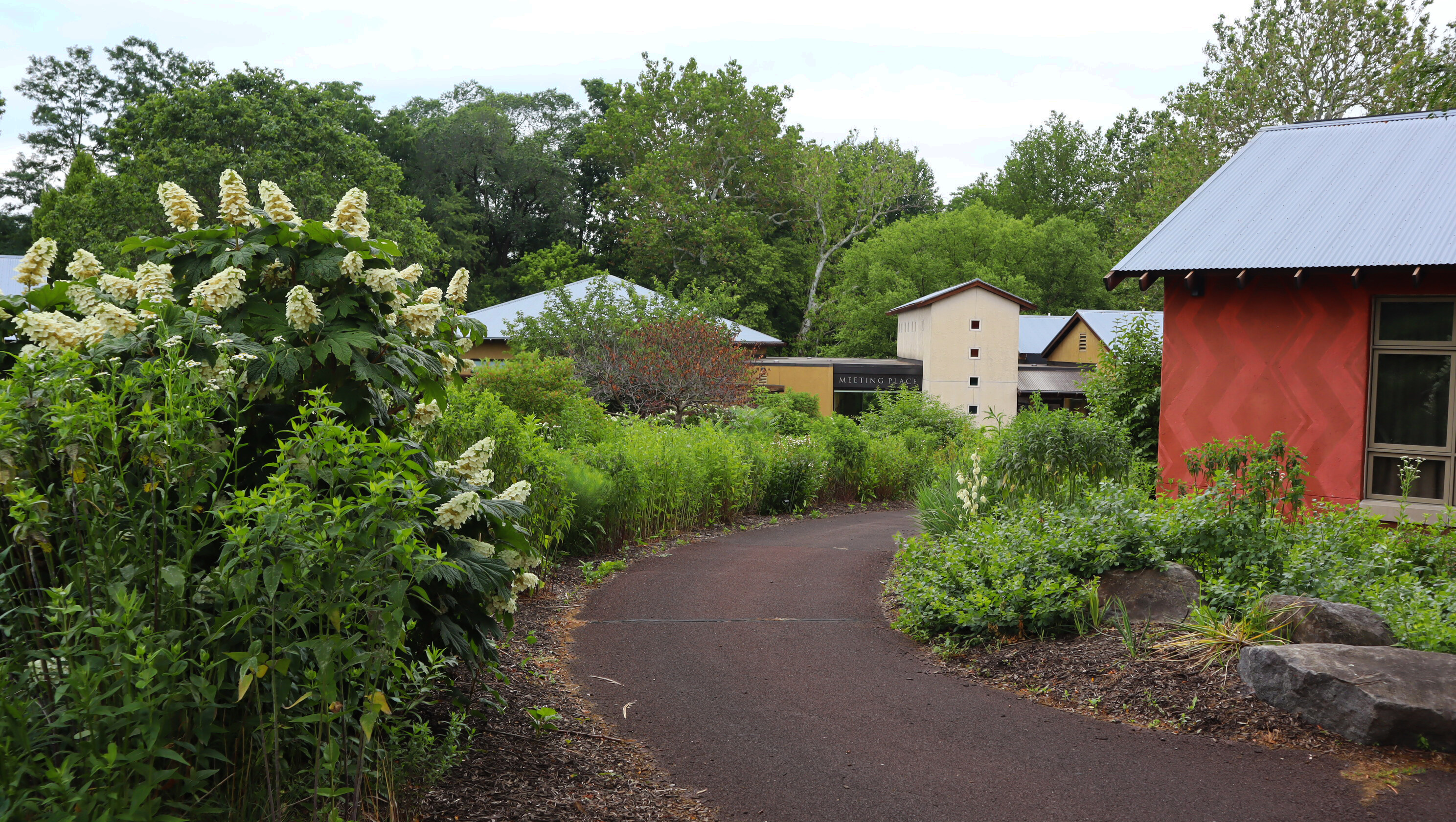
Adding native plants
MCC has always valued caring for creation. But when 2014 brought new research showing dramatic losses in insect and bird life, we started seeking better ways to live in partnership with the nature that shares our Akron, Pennsylvania, campus.
As a result, we have been converting our grounds from traditional to ecological landscaping, a practice that acknowledges native plants as the backbone of local ecosystems. Plants are no longer on campus only for human pleasure. They help with storm water runoff, capturing carbon and supporting the tiny creatures that run our earth.
Relationships are a priority, above and below ground.
Plant communities intertwine and provide food and habitat for other organisms. Below ground, the soil is alive, storing carbon and cleaning water. Above ground, the network of ecosystems helps balance our climate.
We need insects
Native plants often have special relationships with specific insects. These tiny volunteers work on our campus along with us to clean the air and soil, feed the birds and pollinate our flowers. Insects eat the native plants and in turn, the insects are eaten by birds. New wildlife keeps showing up on campus: a bald eagle hunted our woods, a blue heron visited last year, and a big green frog appeared in the new waterfall feature. Eventually, they make our work less, as they balance the ecosystem on our grounds.
We humans have long thought our relationship with nature is to subdue it, to push it into corners where it should function on its own. Earth’s bounty seemed abundant and without measure. We receive praise from our neighbors for tidy yards and clean lines, proof that we have done our part.
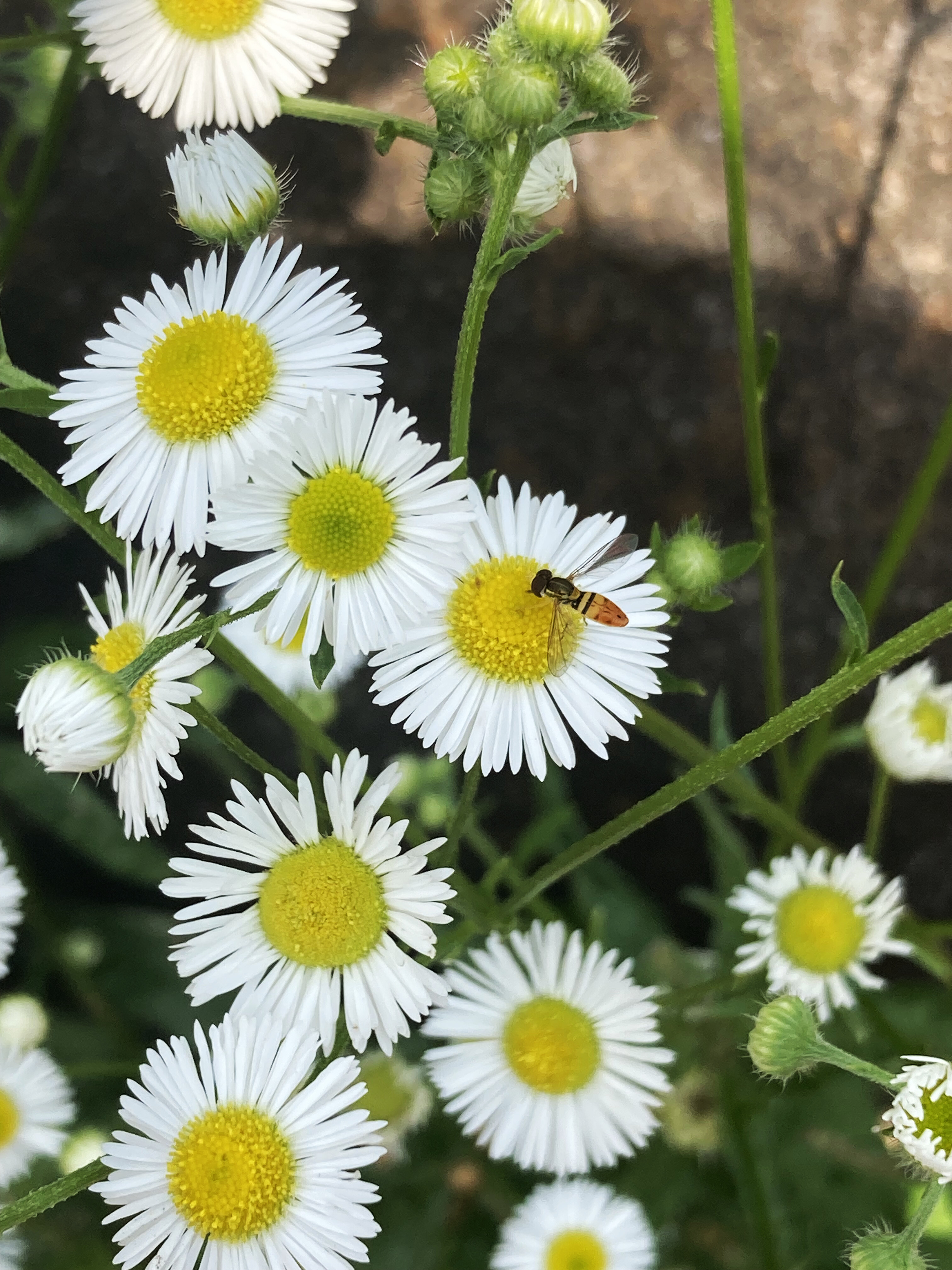
As a result, in my lifetime we have lost half our insects and one-third of our birds. In the lifetime of my 20-year-old son, the speed of the disappearance of wildlife is predicted to increase rapidly as isolated populations of wildlife disappear.
Oliver Millman in the 2022 The Insect Crisis: The Fall of the Tiny Empires That Run the World spells out an intimidating picture of what our world might look like if we lose our insects and microbes. Insects are the basis of our food web. Without them, our entire ecological system collapses and with it, our weather patterns. We must learn to live with insects as much as possible.
Being stewards of the land changes us
Living in right relation with both nature and each other requires living interdependently. Being reminded that we are part of bigger systems teaches us to work for not only personal gain, but for the needs of all, the only way to reach a peaceful future.
Interestingly, I have been noticing a side effect when people start seeing land as habitat to steward, rather than just flowers and sleek lawns. An internal shift happens. Fear is replaced by curiosity and hope starts to nudge out despair. When our relationship with nature moves from subduing to nurturing the land, both we and the land are healthier.
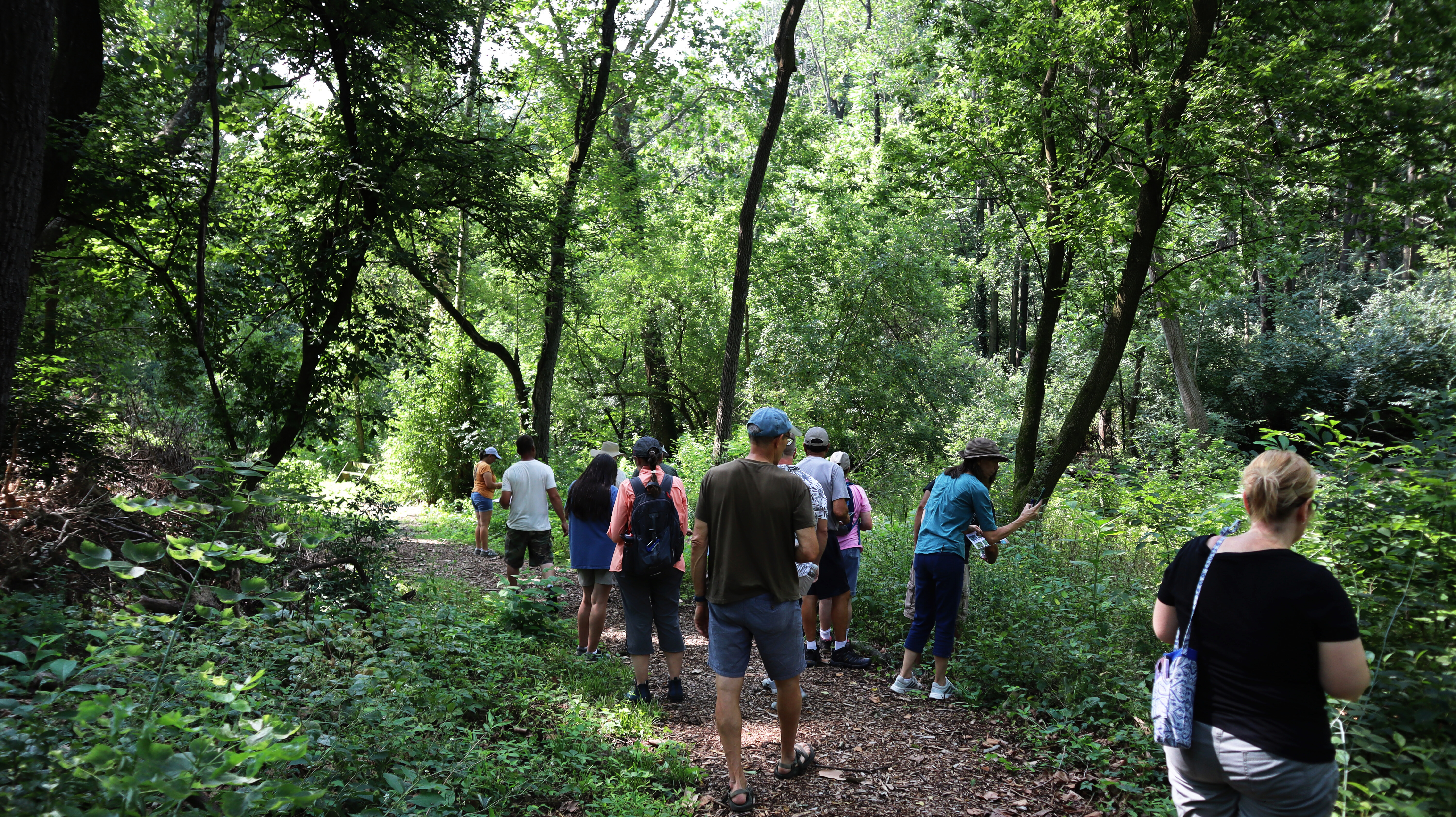
At first, I assumed this was due to folks finally having a tangible way to confront a few of the problems of the world. It is very satisfying to see that when milkweed is planted, monarchs still show up. They are not yet extinct. When pussytoes are planted, the American Lady butterfly will show up to lay its eggs, right on time. The results are often within one season.
Nature and people need each other
As I continue to watch these interactions, though, I believe something more is happening. The sensory aspects of observing nature often have the effect of bringing us into the present, of letting go of our anxieties of the future or past. Nature pulls us out of ourselves and our hyper focused interactions with technology and office work.
Forests have been known to lower blood pressure and soil to lessen depression. Parents are accepting the 1,000 Hours Outside challenge, making sure their children are outside for as many hours as they spend online. Near MCC in Akron, Diamond Street Early Education Center has committed to having the children experience Akron Mennonite Church’s Nature Preserve for as much time as weather permits. Humans need nature as much as nature needs us.
Seeing a stream flow between properties or monarchs fly over borders reminds us that nature is a bigger system than our political boundaries. The earth as shared gives us a common interest with all of humanity. We are all in this together. It is a journey of transformation in how we see and interact with the world. Nothing is healed in isolation or destroyed in isolation. Everything is interrelated. Living in right relationship with creation, God and each other promotes peace.
